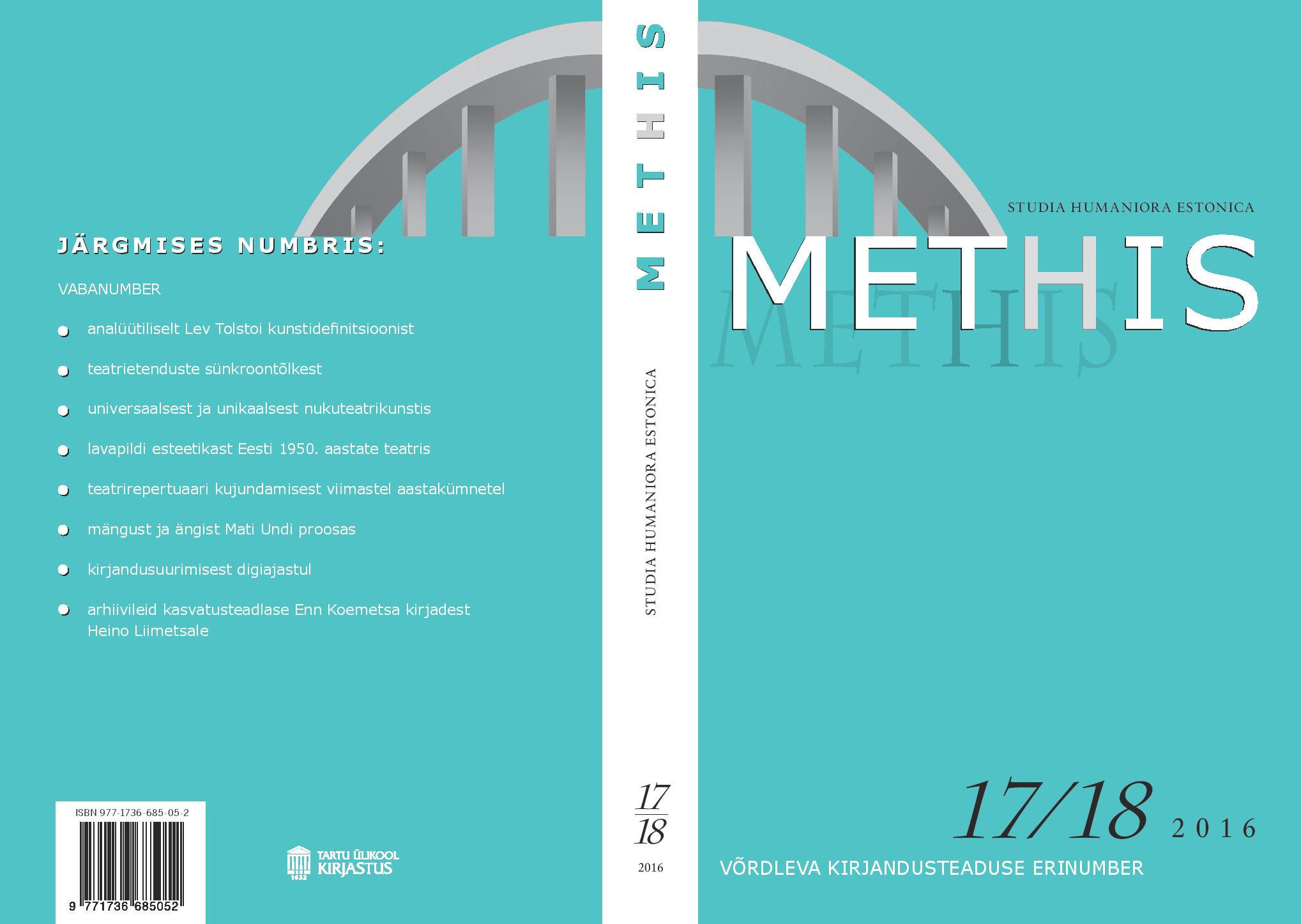Unelõiv ja Saarepiiga: Jüri Talveti kirjanduslik "Kalevipoeg" / The Rhisomes of „Kalevipoeg“: Literary Interpretation of the Estonian National Epic by Jüri Talvet
DOI:
https://doi.org/10.7592/methis.v14i17/18.13214Keywords:
eepos, tüvitekst, intertekstuaalsus, „Kalevipoeg“, maailmakirjandus, epics, core text, intertextuality, The Kalevipoeg, world literatureAbstract
Teesid: Artikkel keskendub eepose „Kalevipoeg“ käsitlusele võrdleva kirjandusteaduse vaatepunktist. „Kalevipoja“ uurimine ilukirjandusliku teosena muutis paradigmaatiliselt rahvuseepose senist tõlgendust ja seda tänu Jüri Talveti käsitlustele „Kalevipojast“ kui suurest Euroopa eeposest, silmapaistavast maailmakirjanduse kunsteeposte seas. Eepose teksti ja poeetika kirjandusteaduslik uurimine on selgitanud, kuidas eepose tekst on üles ehitatud sisemistele, intratekstuaalsetele seostele, mis korduvad gradatsiooniliselt ja toetuvad teatud kindlatele tekstuaalsetele sõlmpunktidele, näiteks „Saarepiiga“, „uni“ jpt. Enam kui autentsed allikad, on „Kalevipoja“ kui kirjandusliku teksti puhul oluline eepose toimimine pidevalt uusi tekste ärgitava tüvitekstina. Eepose analüüs näitab, kuidas selliste seoste alusel tekivad uued kultuurilised ühikud, kauneid näiteid selliste motiivikordustele rajatud seosteahelate kohta leidub ka Jüri Talveti luules.
The article focuses on the treatment of the epic The Kalevipoeg from the viewpoint of comparative literature. This approach is a continuation of the study of literary relations of the epic which, on the one hand is opposite to, but on the other hand continues the present folkloristic approach to The Kalevipoeg as a folklore-based epic, which is based on the comparative-historical method of studying folklore. F. R. Kreutzwald’s role in creating the national epic was enormous; the epic can be conceived as a fictional and intentional piece, emphasising the role of its author. Although different genres of genuine folklore can be recognised in the epic, works of fiction of European and world classics have also been used in its construction, and the text of the epic has itself become an intertextual foundation for new works of fiction. The paradigm of discussing the epic changed due to Jüri Talvet’s groundbreaking treatment of The Kalevipoeg as a great European epic and one of the most remarkable representatives of the genre of literary epic in world literature. Literary scholarship of the text and poetics of the epic has demonstrated how the text is constructed by gradational internal intertextual relations, based on certain textual nodal points such as, e.g., ’island maid’, ’stone’, ’sleep’, etc. For example, the figure of Island Maid is intertextually related to many earlier archetexts and fundamental texts and has, in its turn, inspired other fictional texts. The author intentionally allowed for ambiguous interpretation of the death of a young girl – the girl slipped into water, but was it an accident or a suicide? The Estonian heroic epic differs from other literary epics by a gradational motif of ’sleep’, occurring through the text; by using this motif, the author develops the heroic epic into a tragedy of fate. The hero is informed about his fatal guilt in sleep long before it occurred in real life. Jüri Talvet has discovered such rhizomes of relations in the text of The Kalevipoeg due to his studies of world literature, but he has also written about them in his poetry.


